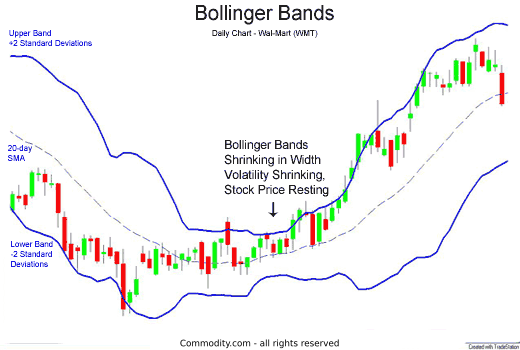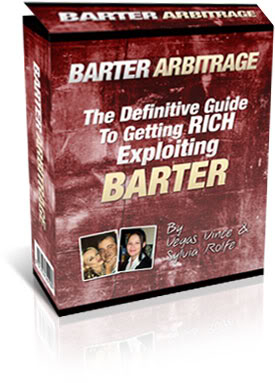Величайшее 777 вулкан регистрации казино в сети
March 28, 2023Консультація : Общая и специальная материальная ответственность: оформление и учет
March 28, 2023Bank Draft A Complete guide on Bank Draft with detail explanation
Content

The financial institution creating the bank draft is obligated to make good on the payment, regardless of whether or not they have sufficient funds in their accounts. Bank drafts are typically available for spending in the recipient’s account within one business day, and it’s unlikely that the bank can reverse the deposit a few days or weeks later. As a result, bank drafts are popular for things like international trade or purchasing a home. When customers request a bank draft, they must transfer the amount of the draft from their account immediately. They must also pay a fee and any additional administration charges.
These secure payments can also prevent you from being the victim of a bounced check, which can take time to track down to recoup your loss. If you ask to be paid through a bank draft, ensure your client or buyer understands that you’re expecting a physical check, not merely an electronic transfer. The contents of this article/infographic/picture/video are meant solely for information purposes. The contents are generic in nature and for informational purposes only. It is not a substitute for specific advice in your own circumstances. The information is subject to updation, completion, revision, verification and amendment and the same may change materially.
It is drawn on the bank itself, signed by an employee of the bank on behalf of the bank as a drawer, and provides to the bank’s customer for remittance purposes. ACH payments likewise allow users to transfer funds between financial institutions. The Automated Clearing House network allows you to complete transfers between virtually any bank or credit union, provided you know the financial data of your recipient. A bank draft is a convenient and secure instrument for making large payments without having to withdraw cash from one’s account.
Definition of Bank Draft
However, most banking accounts offer a certain number of free bank drafts per year. There are two situations in which a seller may not succeed in collecting funds under a bank draft. The first case is when the issuing bank goes bankrupt, so that it is not honoring any outstanding drafts. The second case is when the draft is fraudulent, and so was not actually prepared by a bank. Actually a bank draft is not specially mentioned as a negotiable instrument in Section 13 of the Negotiable Instrument Act.
The banker should take an indemnity bond and then issue a duplicate draft to the purchaser. The draft may be cancelled by the bank if it is not delivered to the payee. When a bank draft is delivered to the payee he acquires a right in the instrument, which cannot be set aside by the ‘stop-payment’ order issued by the purchaser.
- A normal cheque represents an instruction to transfer a sum of money from the drawer’s account to the payee’s account.
- If, due to any reason, a bank draft has been lost, stolen, or destroyed, it can cancel or replace as long as the individual purchasing the draft has the required document.
- However, the payment of the draft should not be refused because of non-receipt of drawing advice.
- That’s because the transaction has already taken place, according to their records.
- For example, a bank draft may be required by the seller when a home or an automobile is being sold.
As mentioned above, bank drafts act as a viable and secure form of payment. They may be required by a seller when they have no relationship with a buyer, when a transaction involves a large sale price, or if the seller believes collecting payment may be difficult. For example, a seller may request a bank draft when selling a home or an automobile. Of course, a seller may not collect funds with a bank draft if the bank becomes insolvent and does not honor outstanding drafts, or if the draft is fraudulent. Bank drafts are a common type of payment used by businesses and individuals.
Examples of Bank Draft
Drafts are also used when one of the parties does not accept personal checks in doubt that the funds may not actually be available. A normal cheque represents an instruction to transfer a sum of money from the drawer’s account to the payee’s account. Any individual or company operating a current account (or checking account) has authority to draw cheques against the funds stored in that account. But a draft is backed by the customer’s bank, which has already withdrawn the necessary funds. This makes bank drafts a more reliable payment option than traditional checks. First, the individual making the payment submits a request for a bank draft with their financial institution.
- For example, electronic bill payments that move funds directly from a bank account to a service provider (such as an electric utility provider or an online merchant) are also called drafts.
- Many online banks allow you to deposit funds electronically, saving you a trip to a branch location.
- For example, a seller may request a bank draft when selling a home or an automobile.
The features, benefits and offers mentioned in the article are applicable as on the day of publication of this blog and is subject to change without notice. The contents herein are also subject to other product specific terms and conditions and any third party terms and conditions, as applicable. These services are being offered free in good faith, and in case of abuse, the bank reserves the right to charge fees as per market norms.
More from Merriam-Webster on bank draft
That’s because the transaction has already taken place, according to their records. If the purchaser wishes to reverse the transaction, the bank usually requires that they redeem the draft for the full amount. In some cases, it is possible to cancel or replace a lost, stolen, or destroyed draft as long as the customer has the right documentation. Therefore, the purchaser of a draft do not have any right to stop payment of a draft. The banker should not comply with stop payment instruction given by the purchaser of a draft. When the bank draft is passed on to the payee, he acquires a right in the instrument.

Sign up today and take 30 risk-free days to discover the difference BILL can bring to your business. Consumers and business owners can also send money using an alternative to drafts, such as a certified check, cashier’s check, or money order. But the following methods may be an even more convenient way to send money quickly and securely. Additionally, a bank draft is more secure than keeping a large amount of cash on hand.
Bank Draft – Meaning and Definition
After the identity verification process, the funds are deposited into the payee’s account. A bank draft is a payment on behalf of the payer, which is guaranteed by the issuing bank. A draft is used when the payee wants a highly secure form of payment. The parties to the draft are the issuing branch, the paying branch and the payee. By issuing a bank draft, the banker takes upon himself a commitment in favour of the payee who is a third party to a draft, to pay a certain amount of money. It is an assurance of the bank to pay the amount to the payee as the consideration is paid by the purchaser of a draft.
A bank draft is a negotiable instrument issued by a financial institution, such as a bank or credit union, that authorizes the payment of a specific amount from one party to another. If you’re away from home or you don’t have a bank account, you can try walking into another bank’s draft meaning in bank branch and asking. Expect to pay the full amount of the check (plus fees) with cash or a debit card cash advance. Instead of getting a bank draft, you can try making your payment with a money order, which should be available at numerous grocery and convenience stores.
Disadvantages of Bank Drafts
It is a written order from a bank or other financial institution, instructing the drawee to pay a specific person or entity a specified sum of money on demand. If the individual has sufficient funds, the bank approves the request, withdraws funds from the individual’s account, and issues a bank draft for an equivalent amount. The funds withdrawn from the individual’s account are generally transferred to the bank’s reserve account until the draft is presented for payment by the beneficiary. This kind of check is usually employed when the amount of money being paid is large, or when the two parties do not know each other that well. Therefore, a secure form of payment is required to complete the transaction.
In such cases, the buyer can lose a lot of money, especially since bank drafts are generally used for larger purchases. You can only purchase bank drafts from a bank, while money orders can be purchased from certified stores, post offices, or banks. The person who receives the draft can get the money from the local branch at his residence.

Understanding how bank drafts work is very simple – the financial institution that issued the draft will transfer a certain amount of money from one account to another. Take it to your bank or credit union and endorse the back of the document. Your bank may credit the funds to your account more quickly if you make your deposit with a bank employee, as opposed to using an ATM or mobile device to deposit. Plus, you might be able to get more (or all) of the amount in cash immediately. With a bank draft, the bank often moves funds from the payor’s account into the bank’s accounts immediately when the bank issues the draft. In other words, a person or organization paying with a bank draft can’t even get a bank draft unless they have the funds required.
Examples of Bank draft in a sentence
Customers may likewise appreciate the ability to send a check by mail without including their sensitive bank account information. The bank will withdraw the requested funds from the customer’s bank account and deposit them into a separate account owned by the bank. This step means that technically the bank, rather than the customer who made the initial request, becomes the paying party. A bank draft is difficult to cancel since the funds have already been withdrawn from the buyer’s account and transferred into the bank’s reserve account. However, if the bank can confirm that the bank draft has not been cashed out by the payee, it might agree to cancel the bank draft and refund the buyer’s account.

